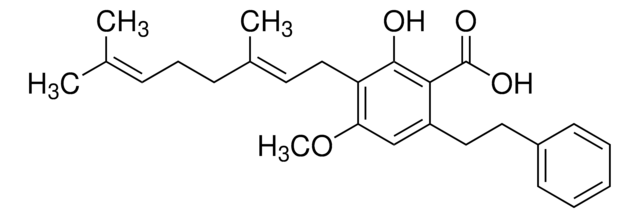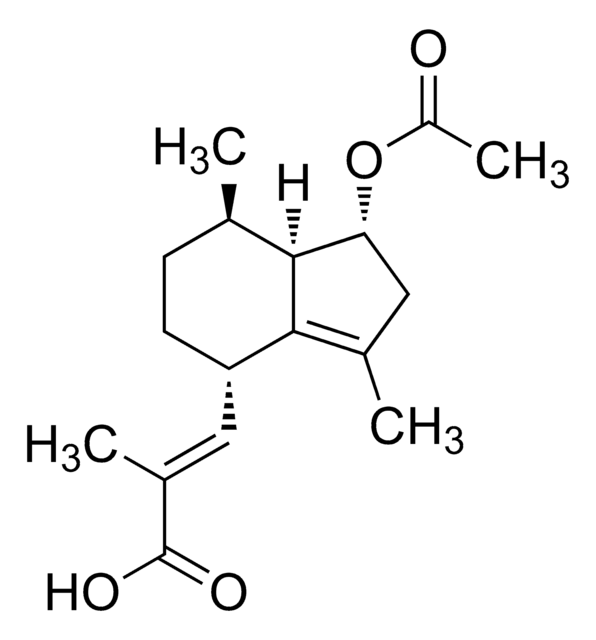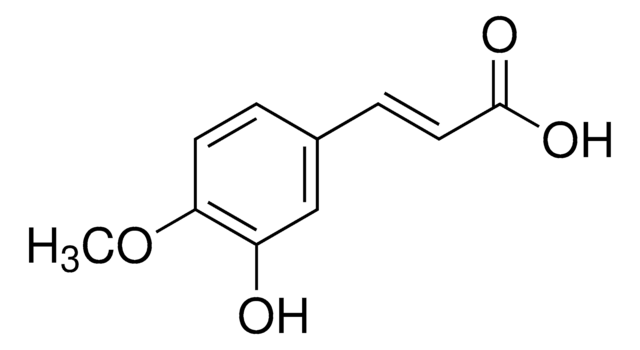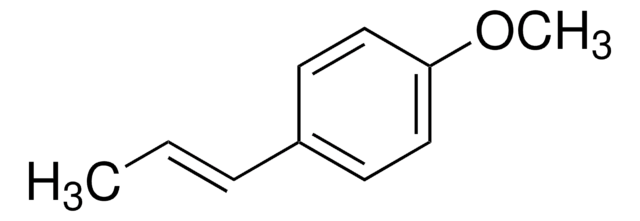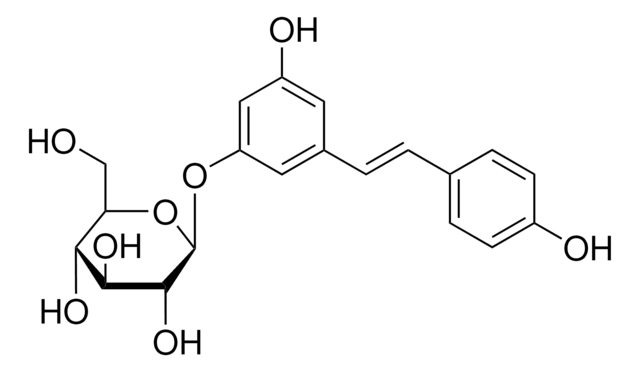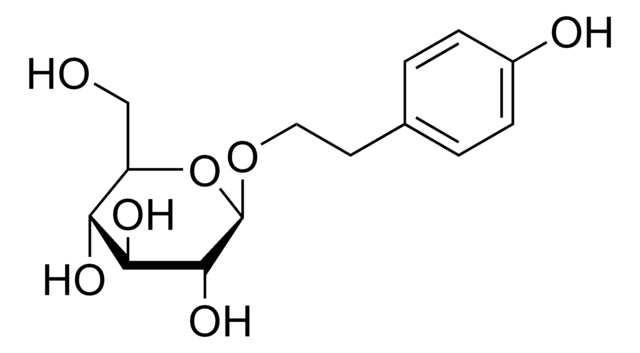SMB01019
Amorfrutin A
≥90% (LC/MS-ELSD)
Sinónimos:
2-hydroxy-4-methoxy-3-(3-methylbut-2-enyl)-6-(2-phenylethyl)benzoic acid, 3-hydroxy-4-isopentenyl-5-methoxybibenzyl-2-carboxylic acid
About This Item
Productos recomendados
origen biológico
plant
Ensayo
≥90% (LC/MS-ELSD)
Formulario
solid
mol peso
340.41
solubilidad
water: slightly soluble
aplicaciones
metabolomics
vitamins, nutraceuticals, and natural products
temp. de almacenamiento
−20°C
cadena SMILES
O(C)c1c(c(c(c(c1)CCc2ccccc2)C(=O)O)O)CC=C(C)C
InChI
1S/C21H24O4/c1-14(2)9-12-17-18(25-3)13-16(19(20(17)22)21(23)24)11-10-15-7-5-4-6-8-15/h4-9,13,22H,10-12H2,1-3H3,(H,23,24)
Clave InChI
CTNFTPUIYFUXBE-UHFFFAOYSA-N
Categorías relacionadas
Descripción general
Aplicación
Acciones bioquímicas o fisiológicas
Características y beneficios
- High quality compound suitable for multiple research applications
- Compatible with HPLC and mass spectrometry techniques
Otras notas
Código de clase de almacenamiento
11 - Combustible Solids
Clase de riesgo para el agua (WGK)
WGK 3
Punto de inflamabilidad (°F)
Not applicable
Punto de inflamabilidad (°C)
Not applicable
Elija entre una de las versiones más recientes:
Certificados de análisis (COA)
It looks like we've run into a problem, but you can still download Certificates of Analysis from our Documentos section.
Si necesita más asistencia, póngase en contacto con Atención al cliente
¿Ya tiene este producto?
Encuentre la documentación para los productos que ha comprado recientemente en la Biblioteca de documentos.
Nuestro equipo de científicos tiene experiencia en todas las áreas de investigación: Ciencias de la vida, Ciencia de los materiales, Síntesis química, Cromatografía, Analítica y muchas otras.
Póngase en contacto con el Servicio técnico